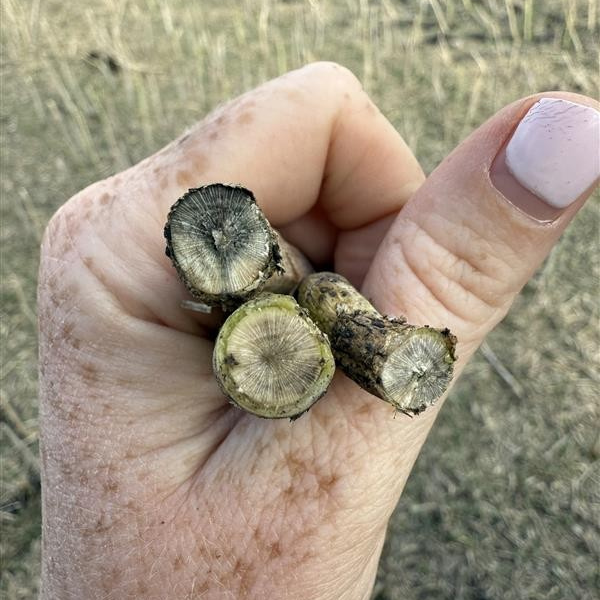Canola Yields Shattered Records - Yet Disease Still Lingers
At Pitura Seed Farms, we were pleasantly surprised when the combines pulled in a record-breaking canola crop in 2025, and many farms across Manitoba are reporting similarly exceptional yields.
This growing season had us doubting the yield potential for our farm given the very dry summer and thick wildfire smoke we experienced in June and July. We kept our fingers crossed that the rains we received in August came in time to help rescue a very uneven canola crop – our soil moisture probes were still predicting below average yields based on water-driven yield potential.
So, when we see field averages at 60+ bu/ac, it's not surprising that some growers assume disease pressure was minimal this season—after all, dry conditions are typically less favorable for disease development. However, that assumption doesn’t reflect the full picture.
Despite the outward appearance of healthy, green stubble when riding in the combine cab, stubble samples taken from multiple fields have shown visible disease symptoms.
Image 1, 2: Blackleg stem symptoms including cankers are usually white or grey with a dark border and many black pycnidia in the lesion. Stubble from Oakbank (left) and Domain (right). Photos from Katie Meggison.
Image 3: Cross sections from Rosenort. Top/left stem showcasing distinct dark wedge shapes of Blackleg versus middle stem with greyish “starburst” pattern of Verticillium. Photo from Katie Meggison.
The results from field sampling and lab analyses reveal the true story. Laboratory results confirmed that 100% of fields we sampled tested positive for both blackleg and verticillium.
Infected stem counts ranged from 25–65% for verticillium (low severity) and 25–50% for blackleg
Image 4: from Canola Council disease identification guide.
This highlights a key concern: high yields can still coincide with significant disease presence and although late-season infection didn’t largely impact yield, it will contribute to the inoculum load for future crops.
On the bright-side, these wet fall conditions encourage microbial activity, which accelerates residue breakdown which help reduce the carryover of Blackleg, which is a residue-borne disease. However, Verticillium is soil-borne and behaves differently. It persists in the soil and requires a suitable host to survive.
This season has delivered impressive canola yields, but growers should not let that overshadow the underlying disease risks. Even if overall disease severity appeared low during the growing season, the presence of disease in one out of every four stems can significantly increase the inoculum in a field. This means that growers could face elevated disease risk in future seasons, particularly if rotations remain tight. Scouting, sampling, and longer rotations remain essential tools for sustaining crop health and yield potential in the years ahead.
~Katie Meggison




